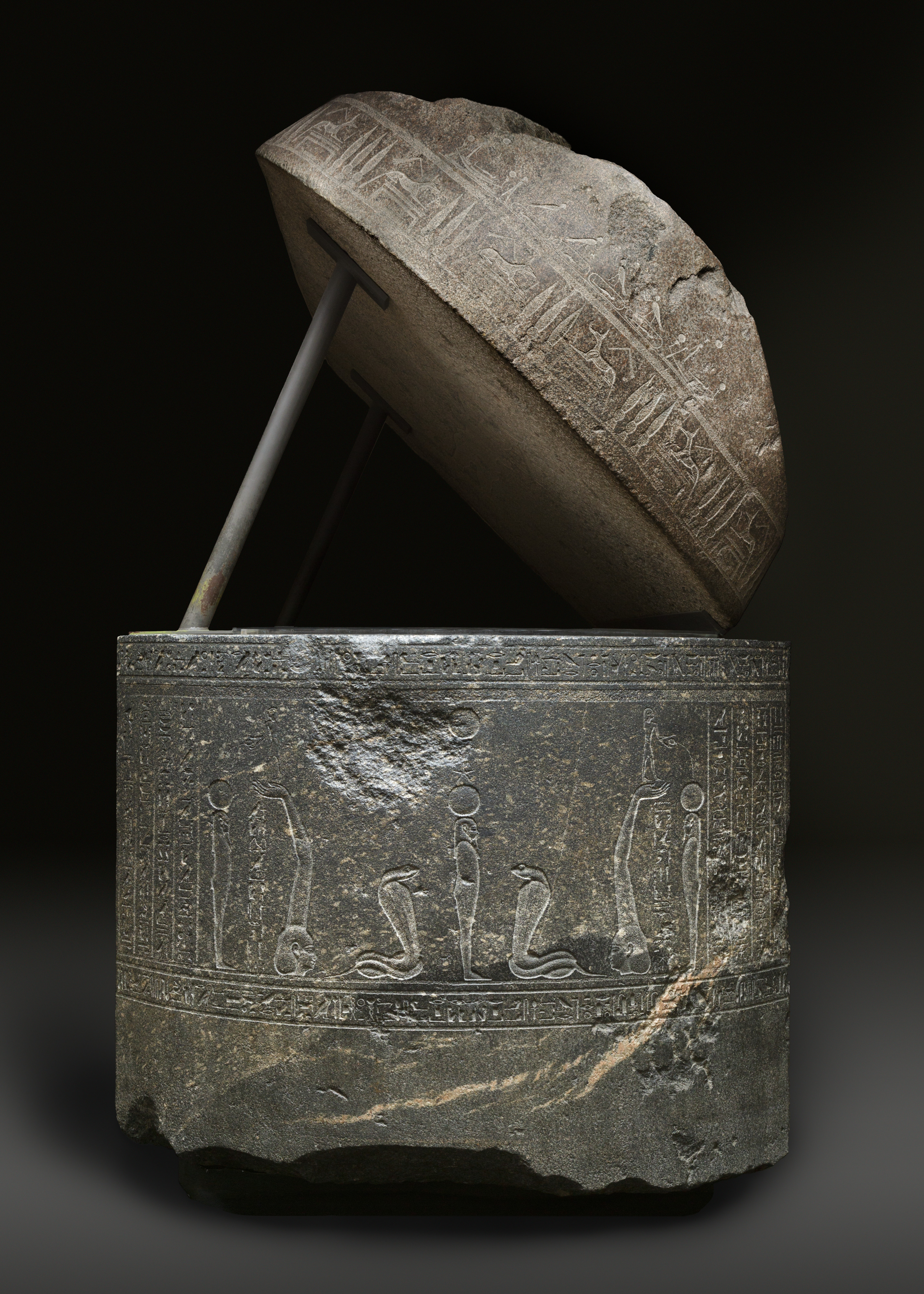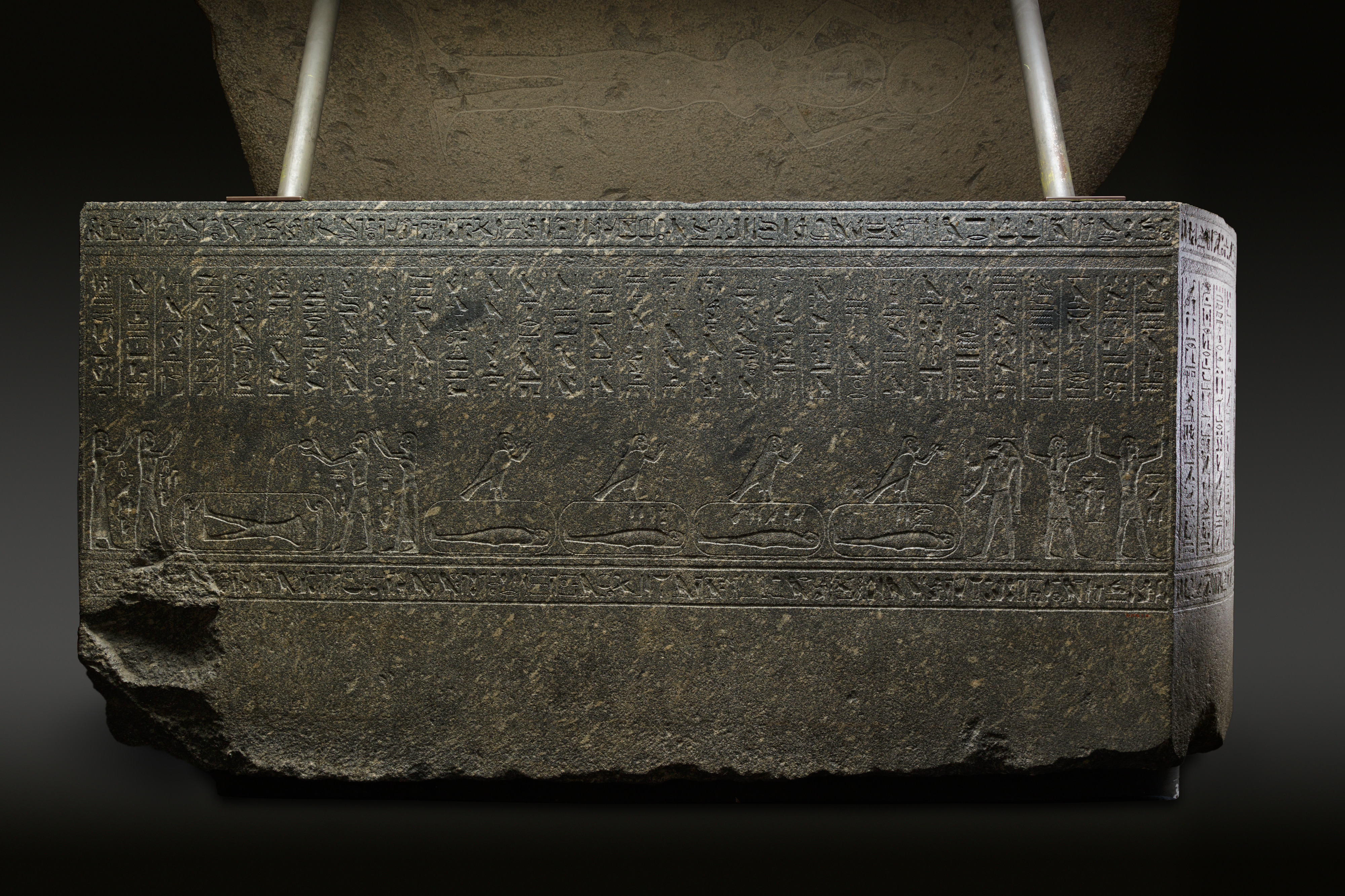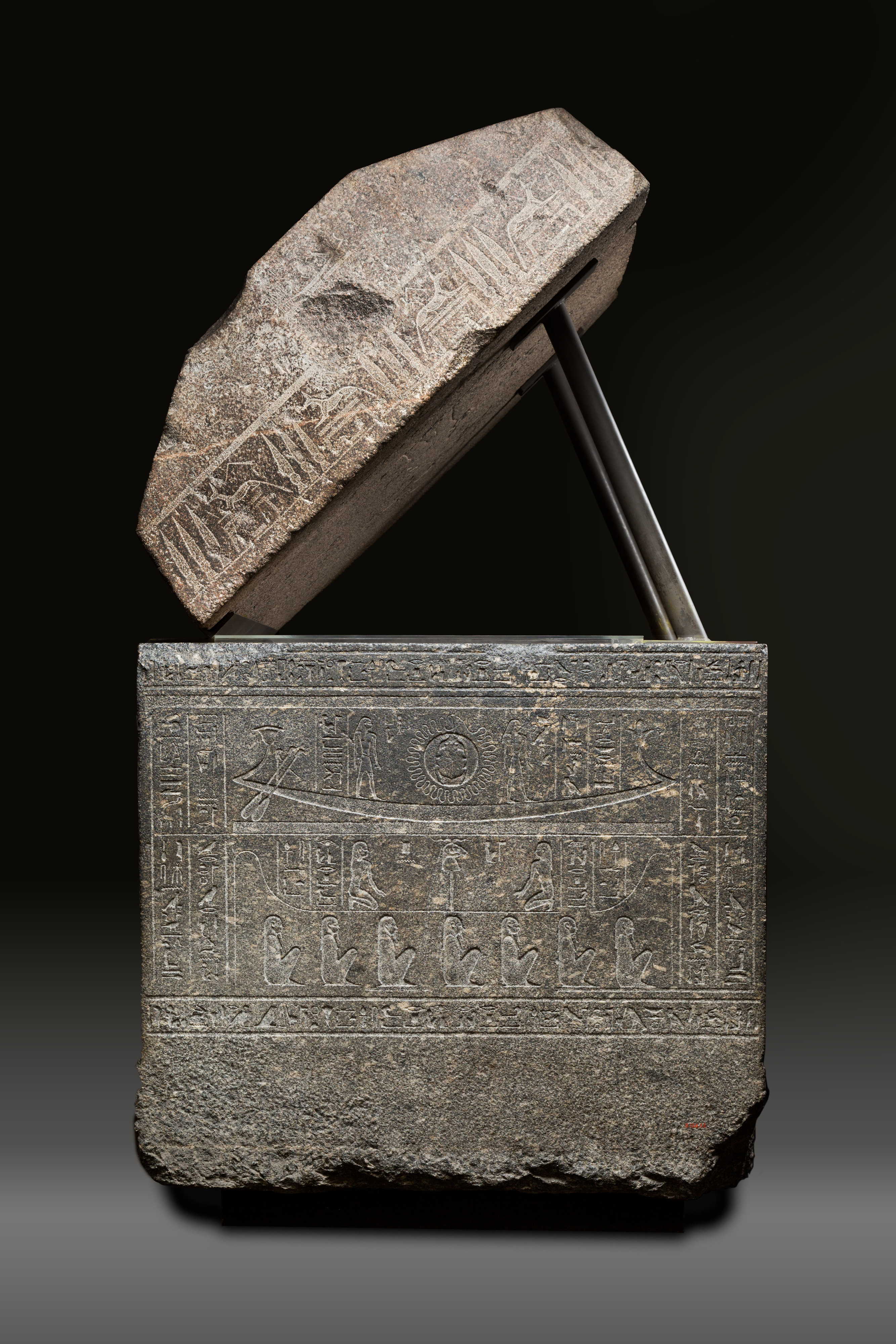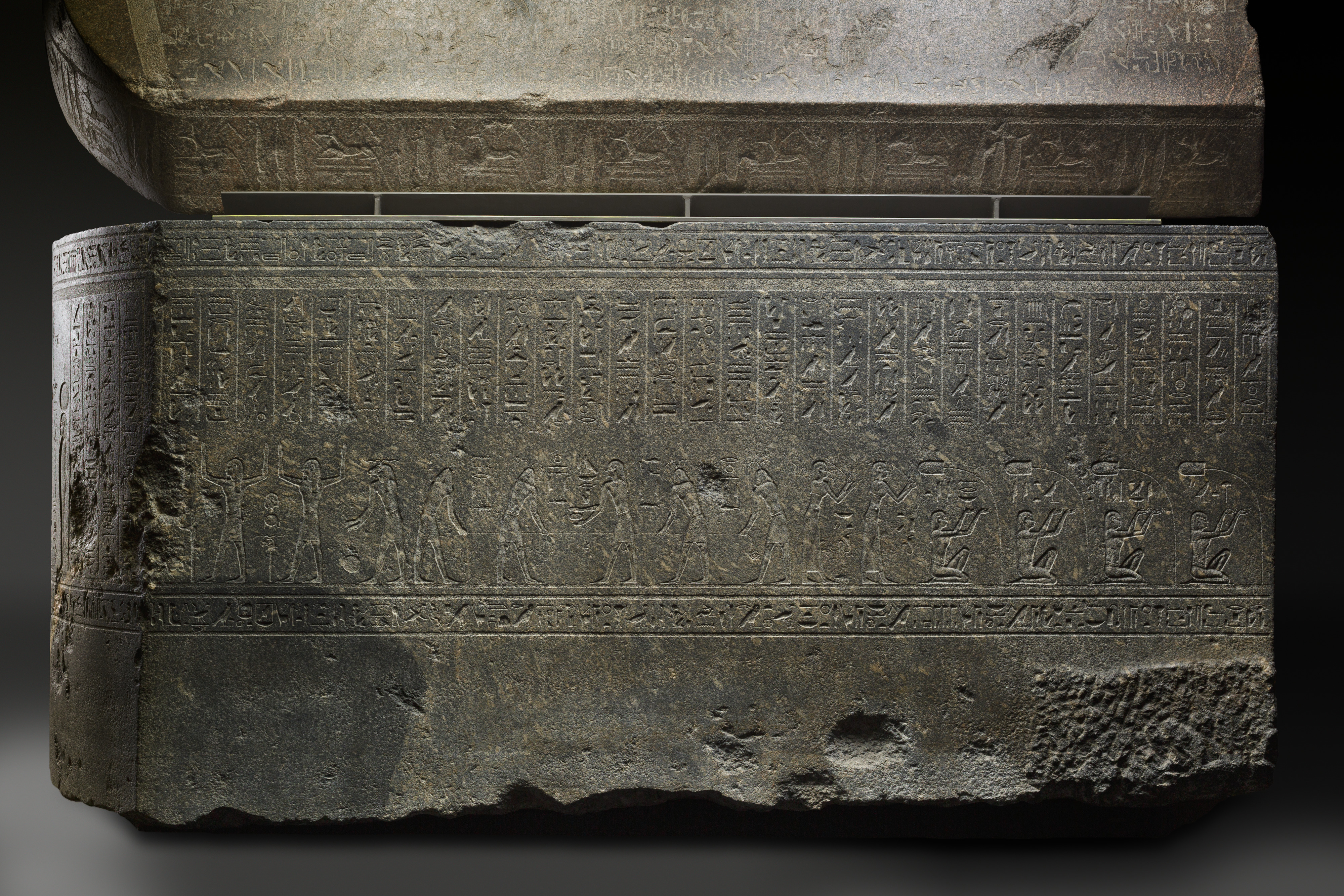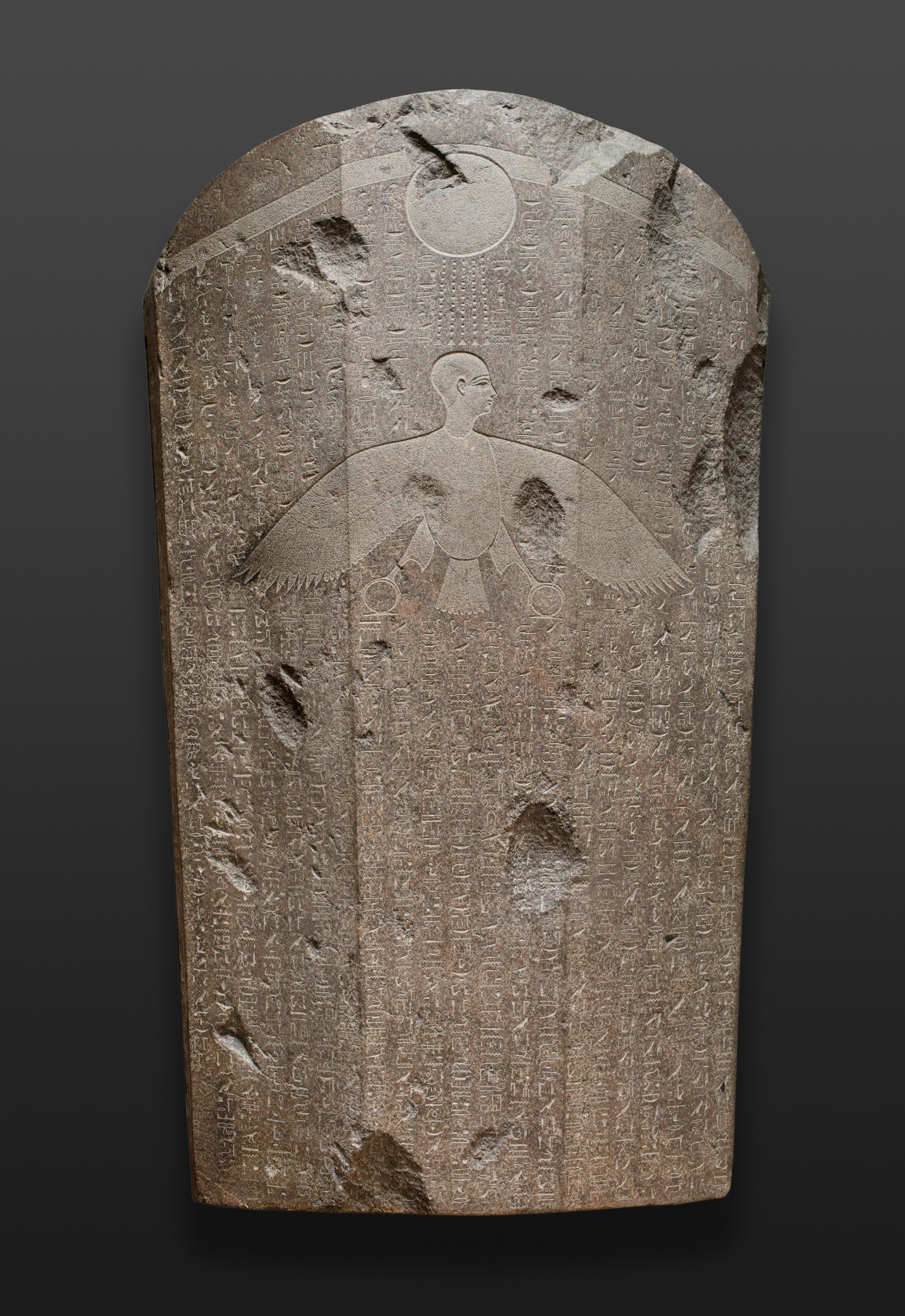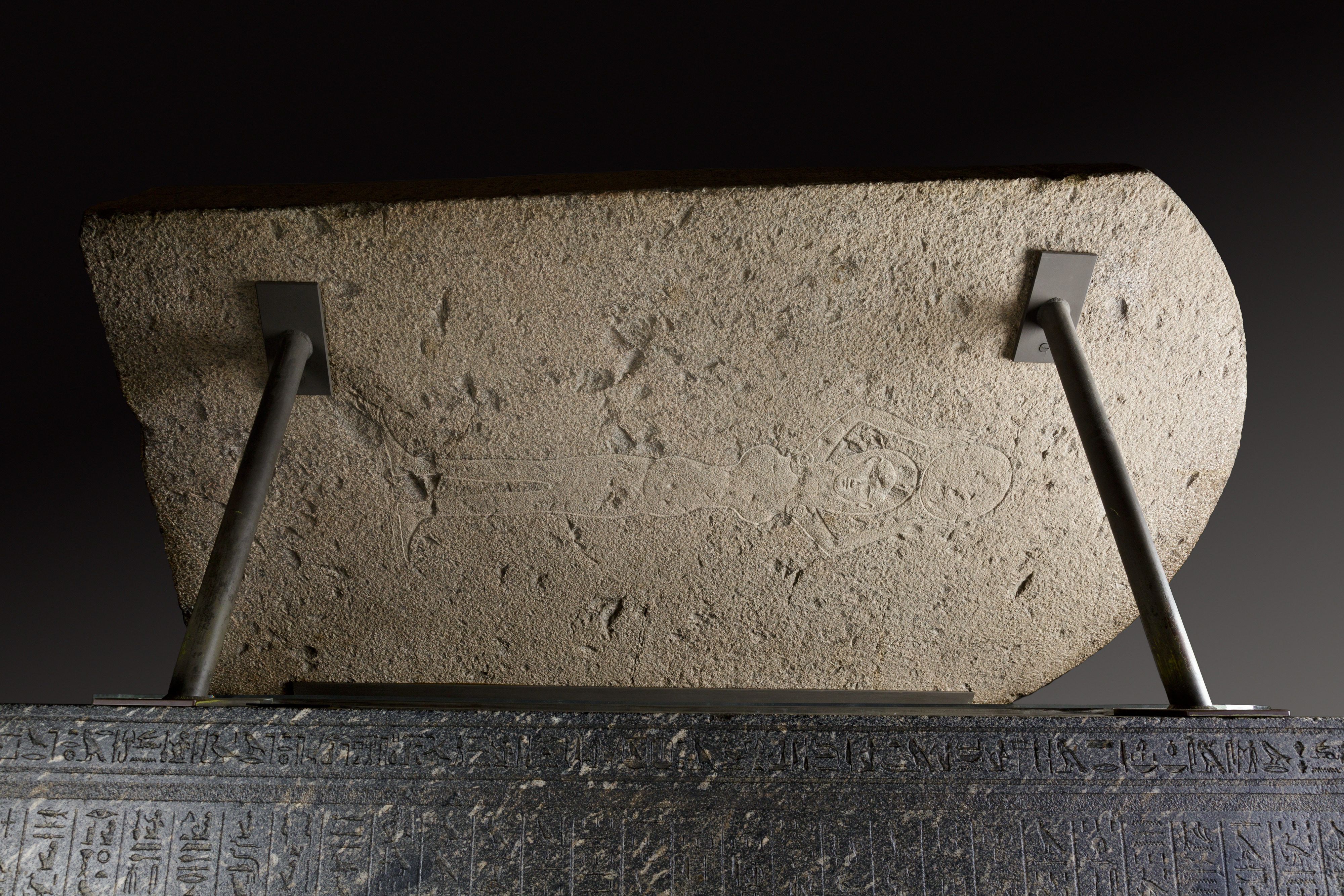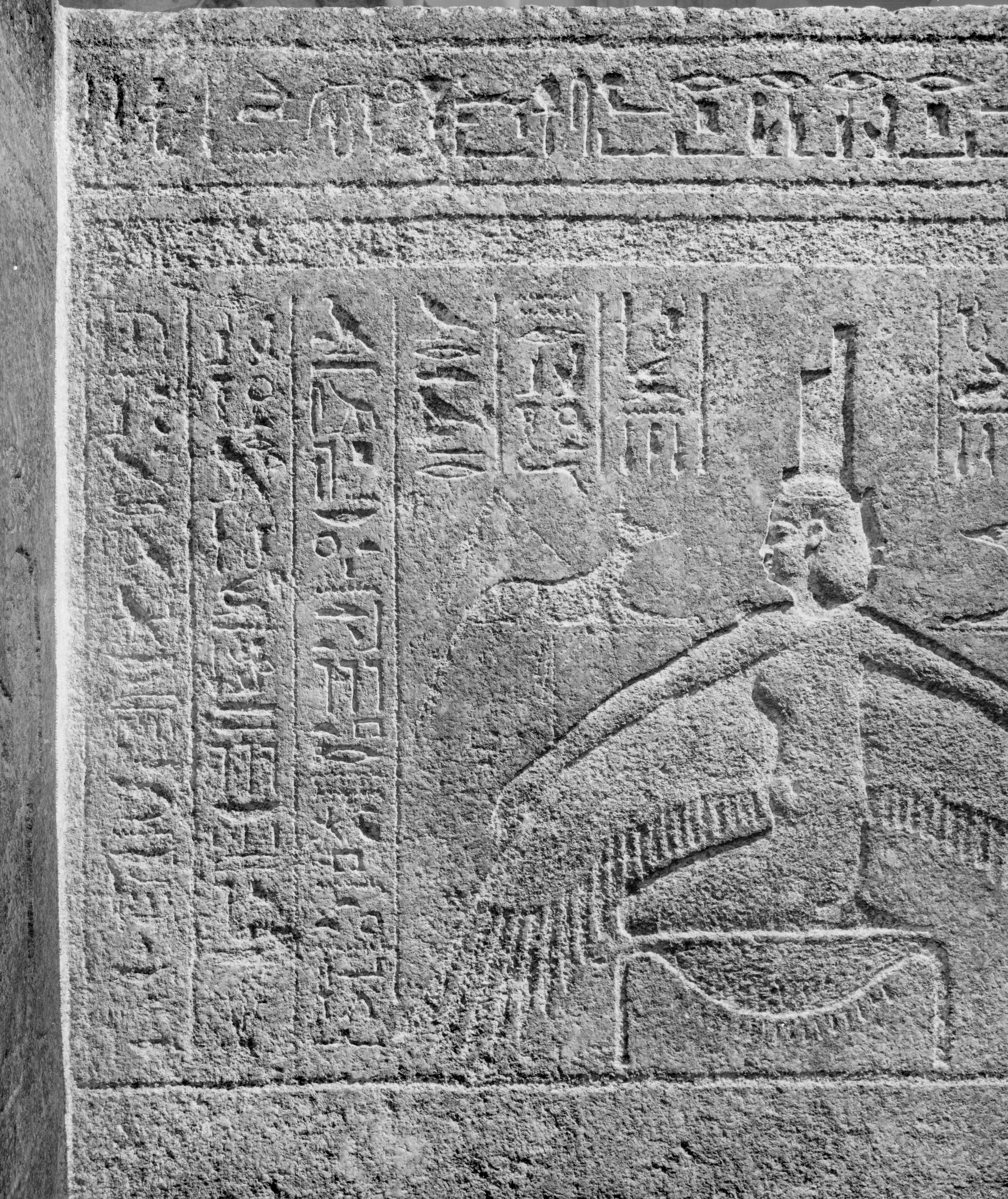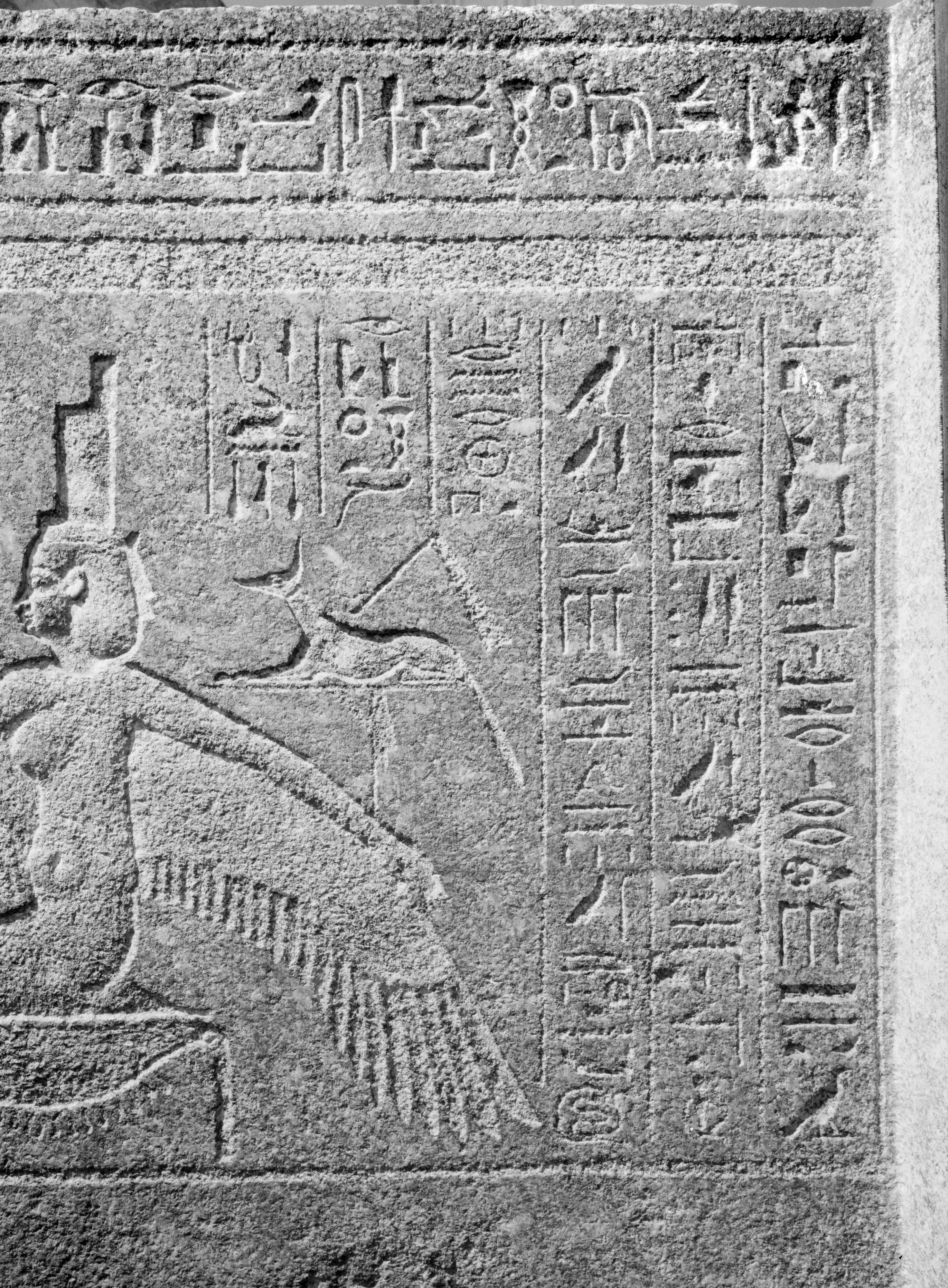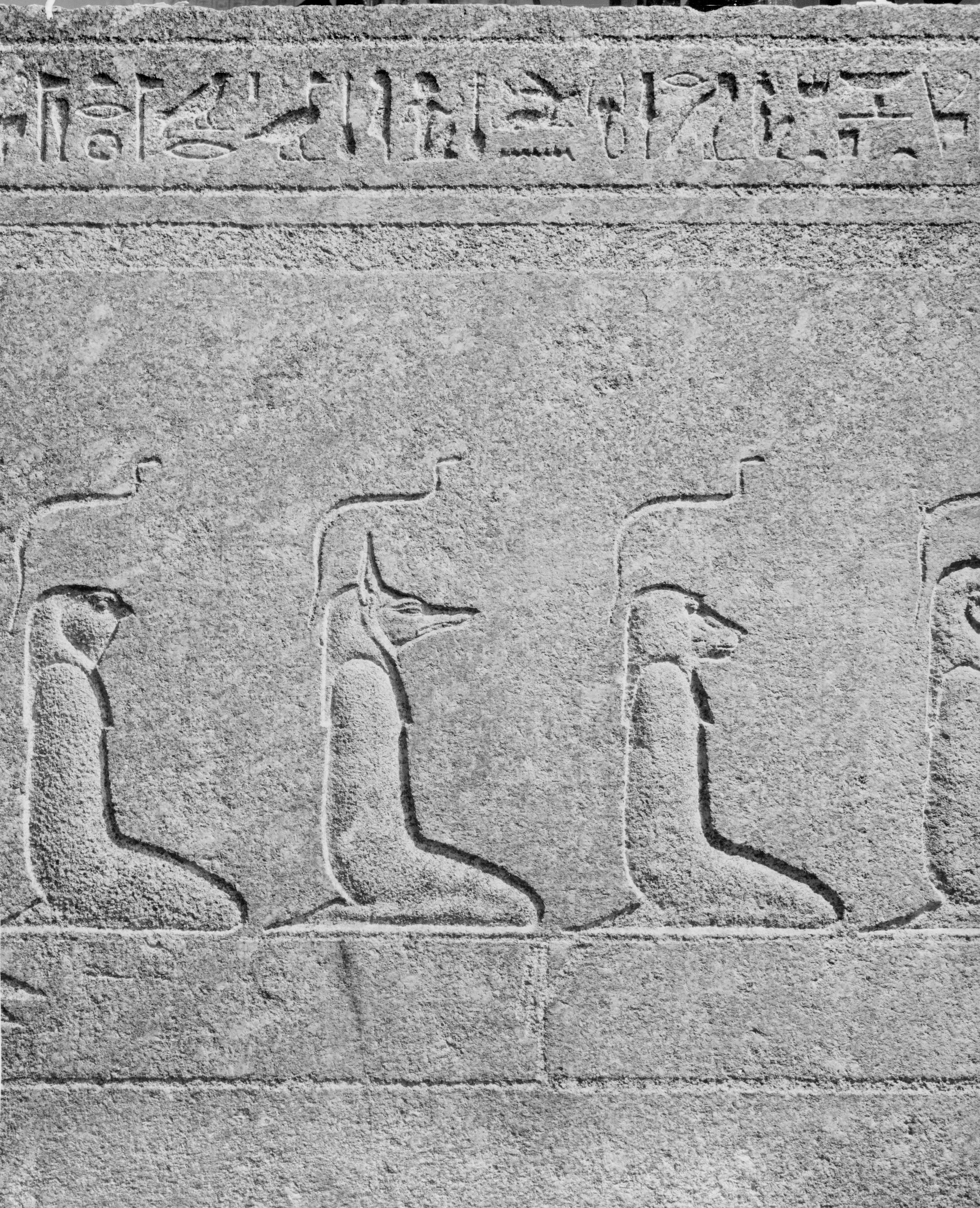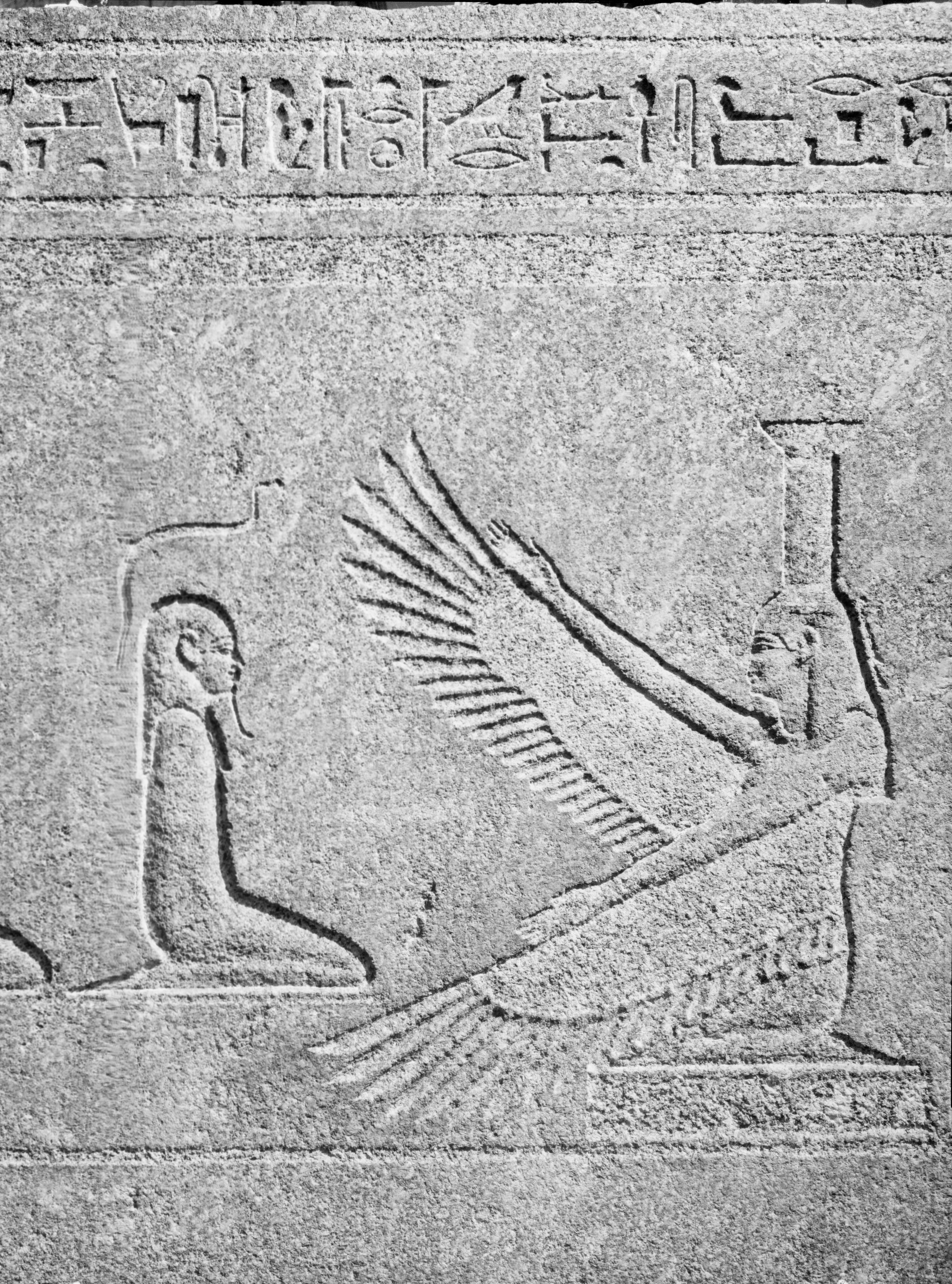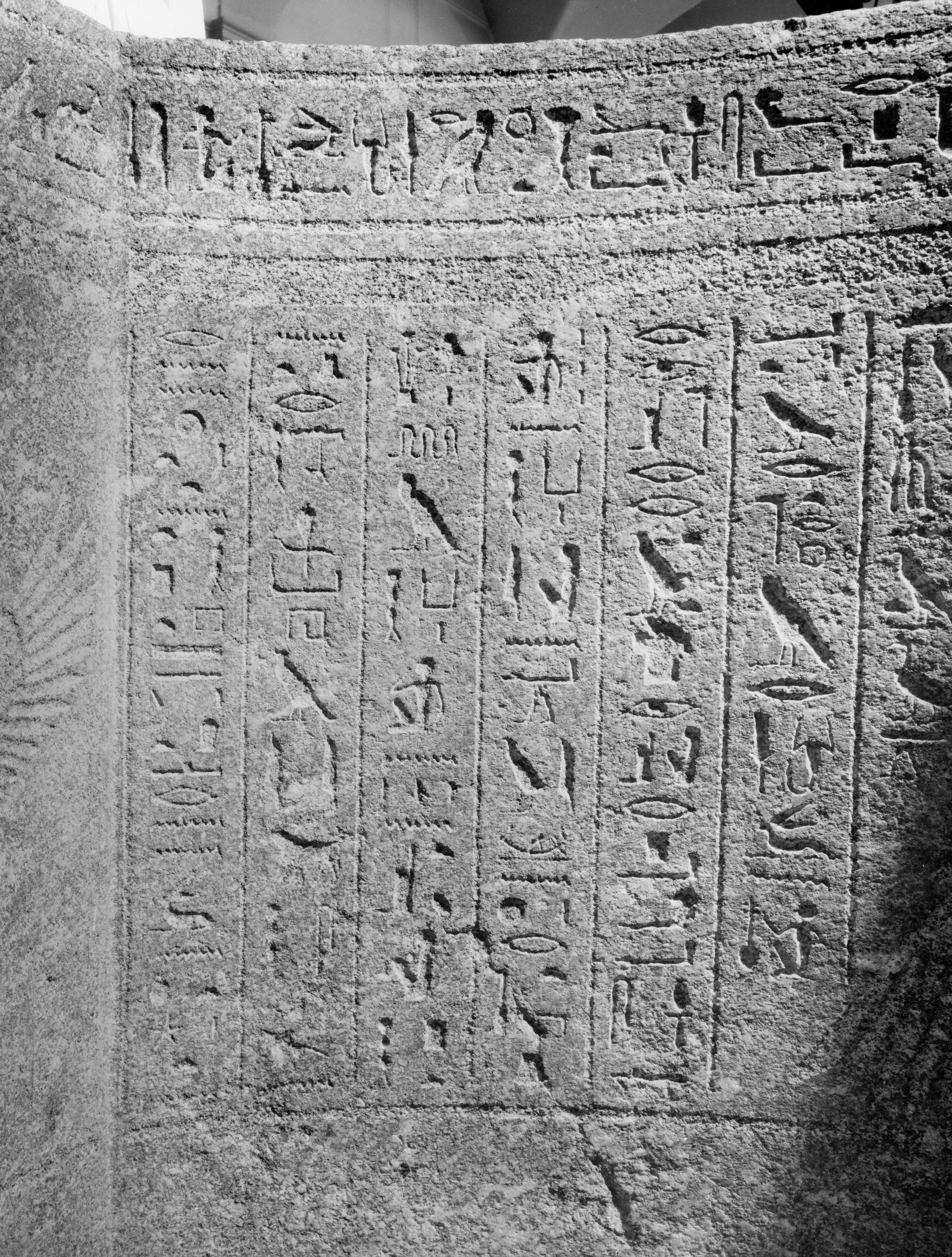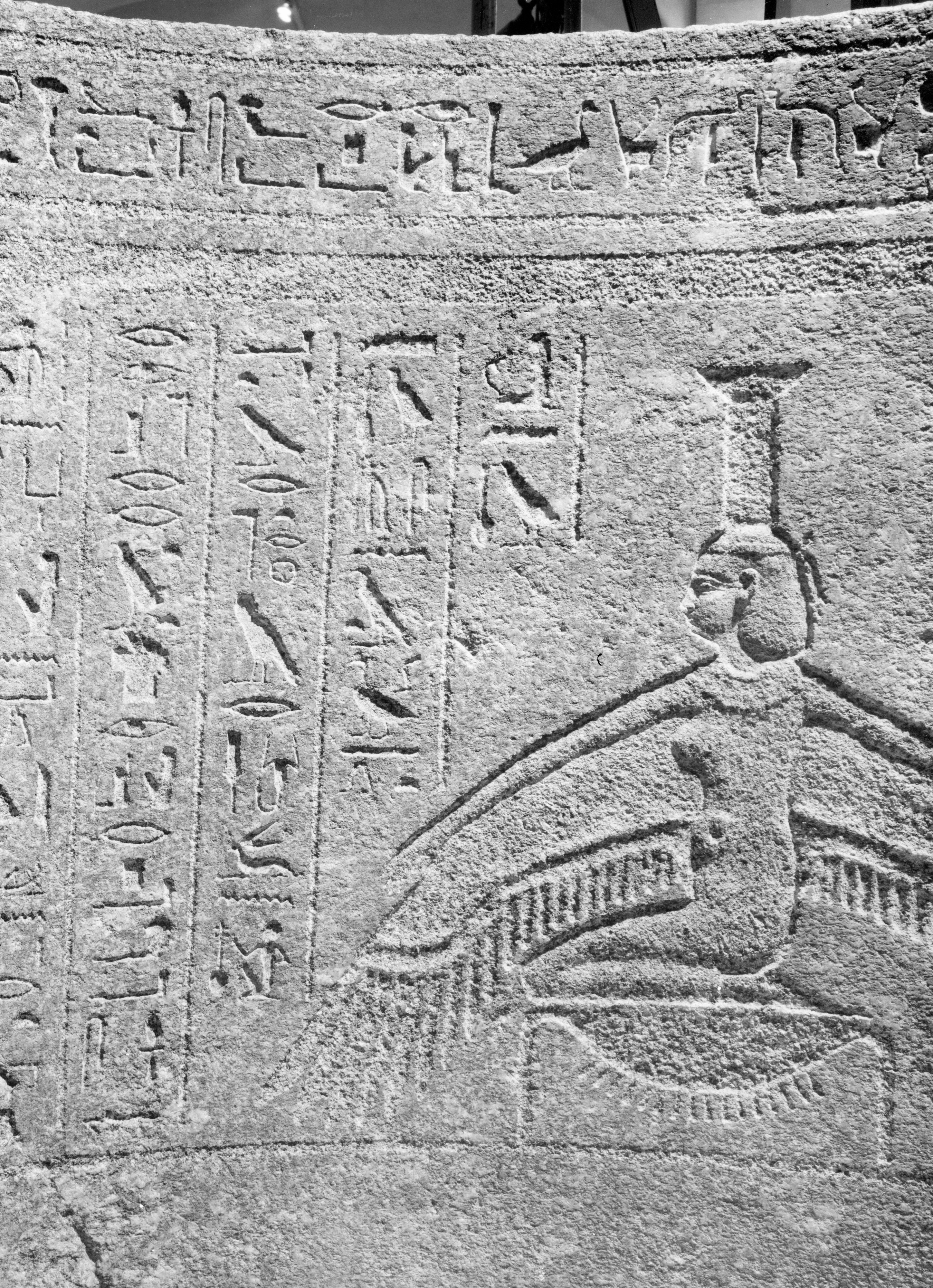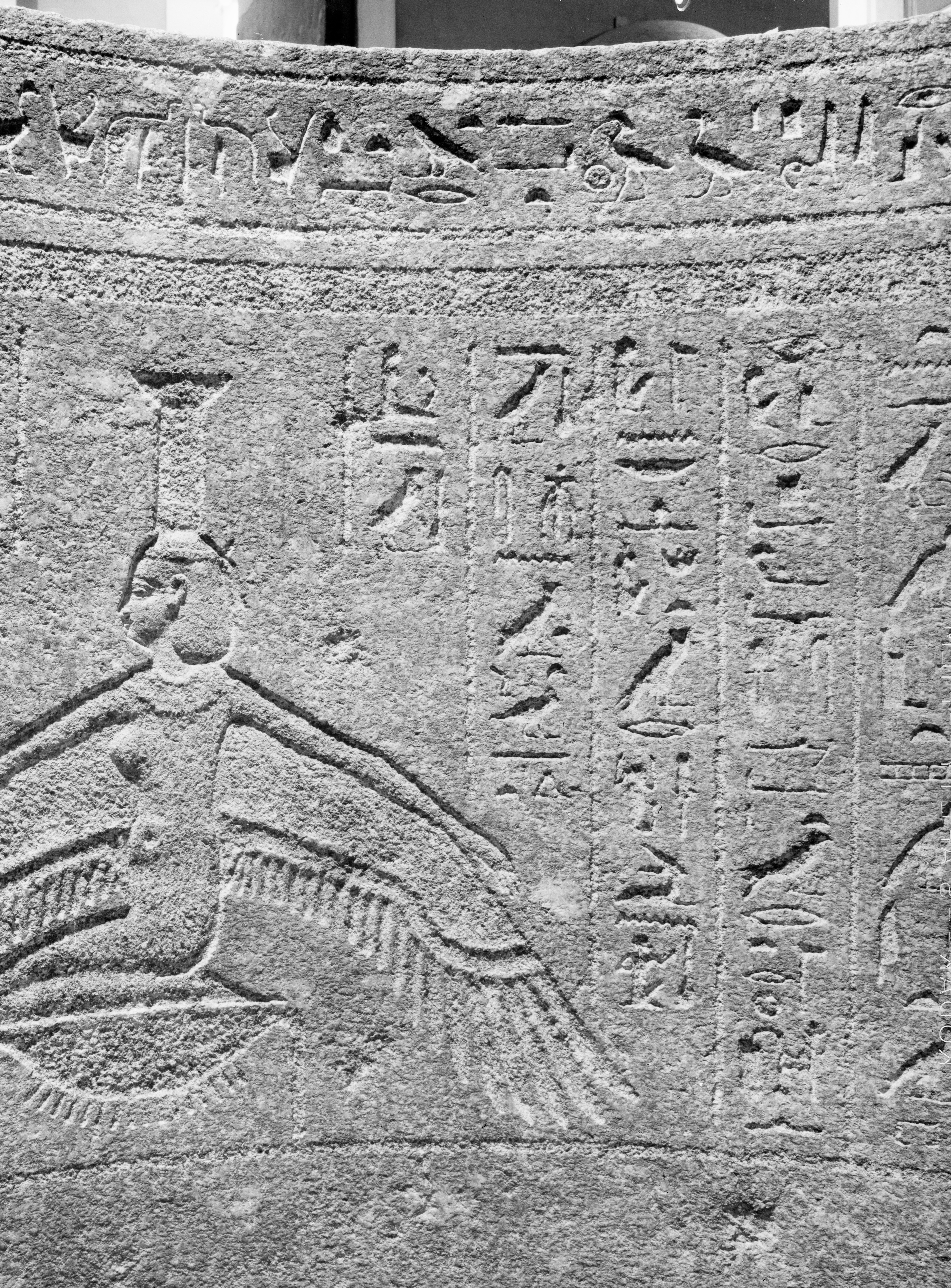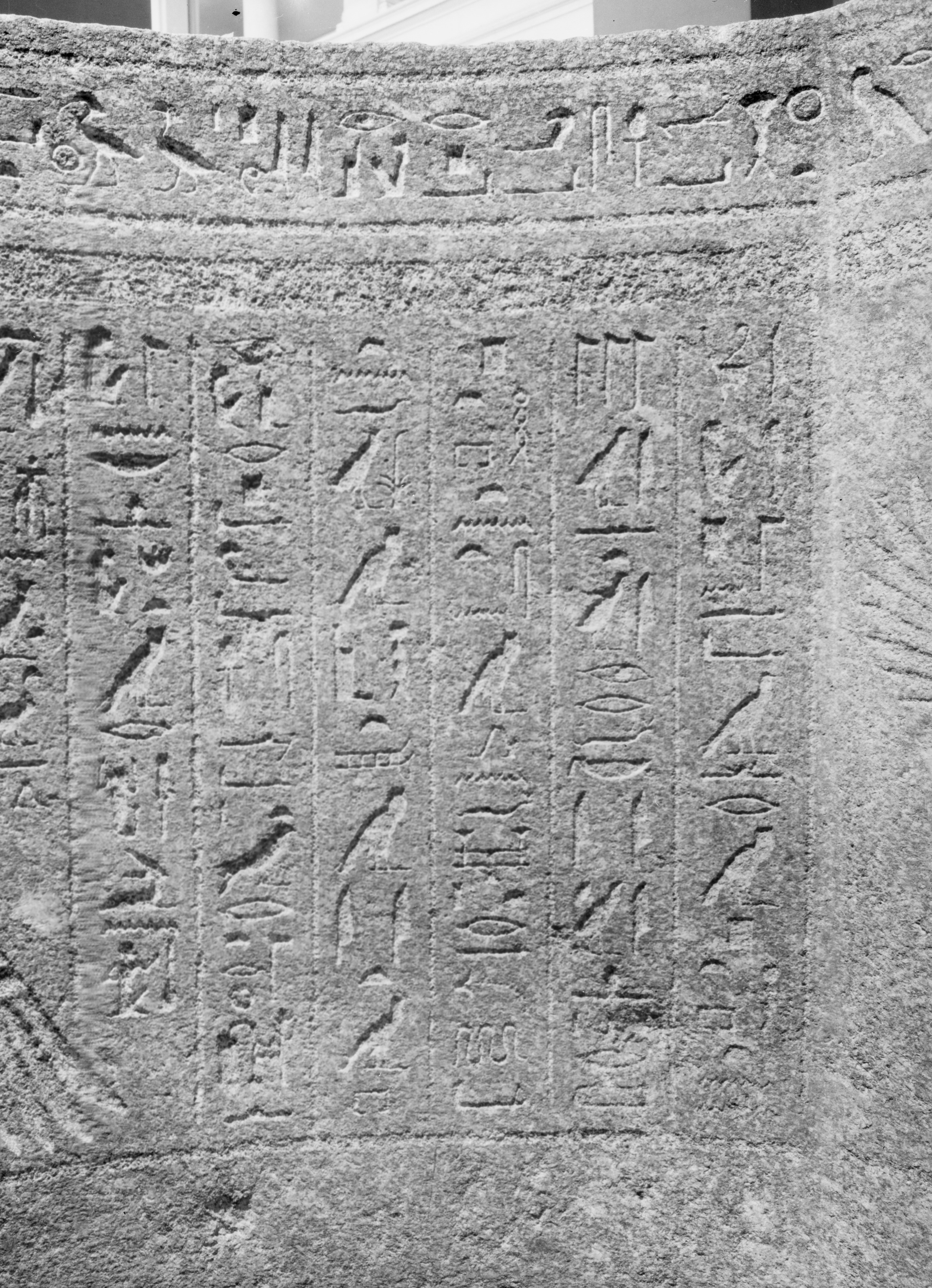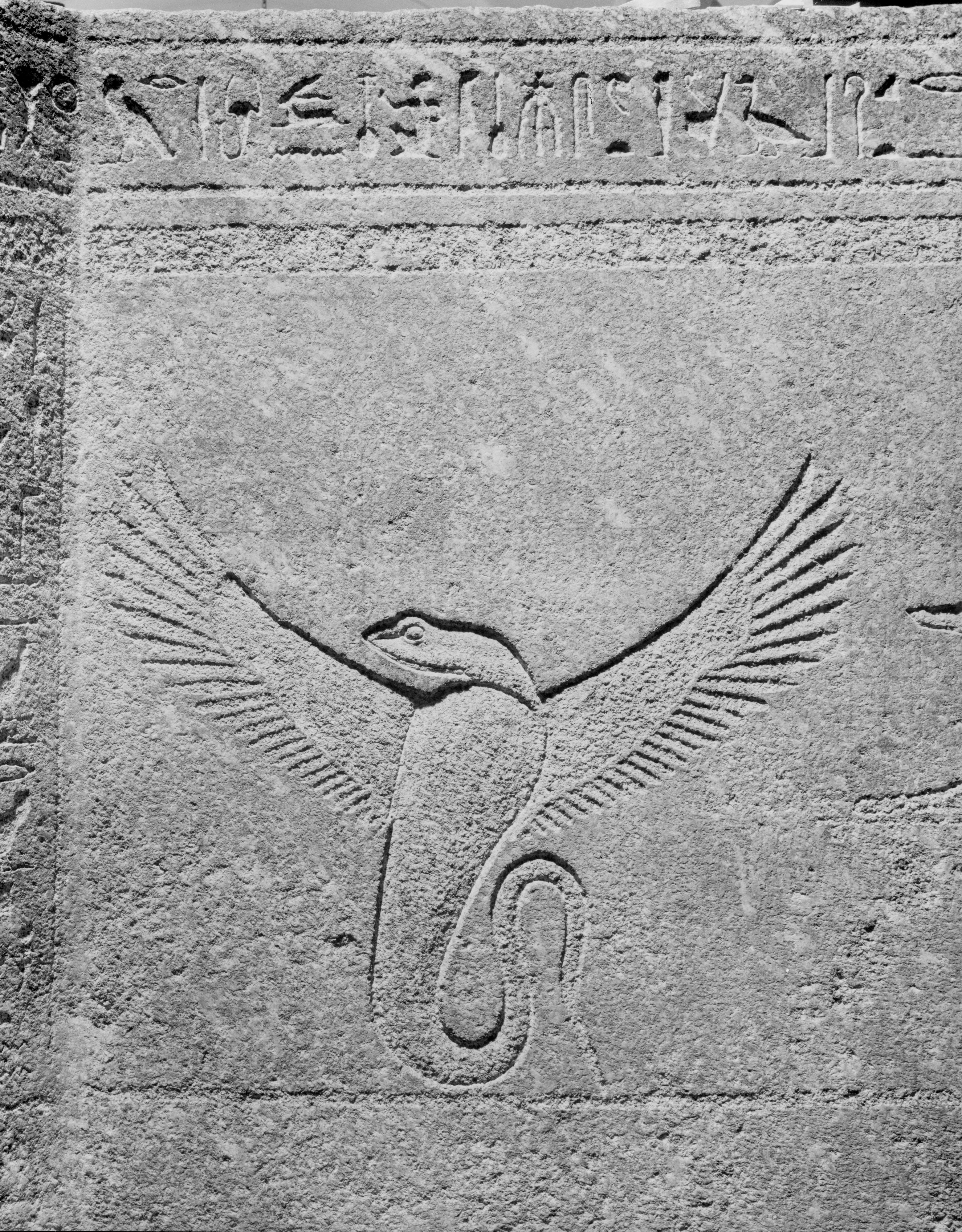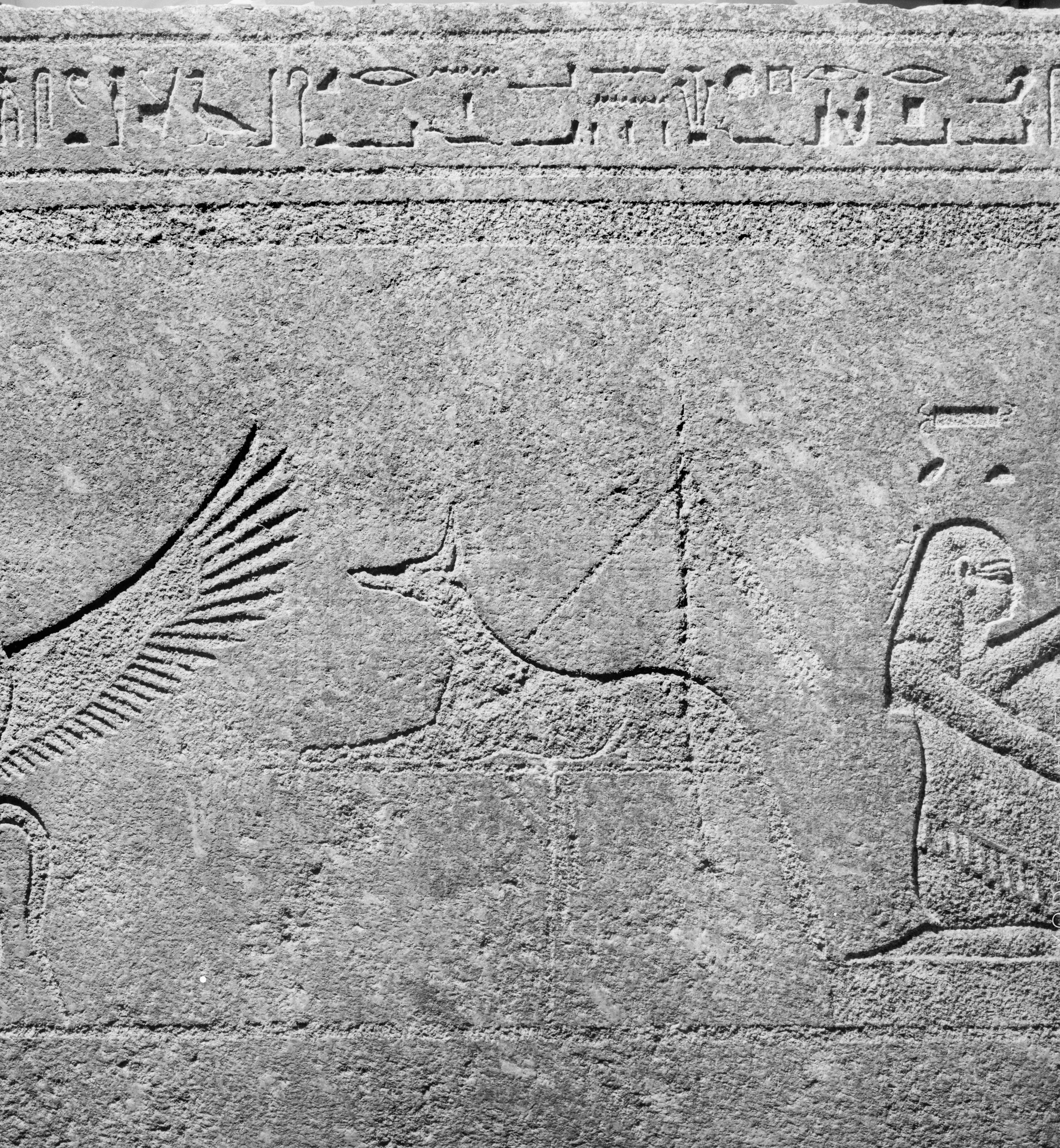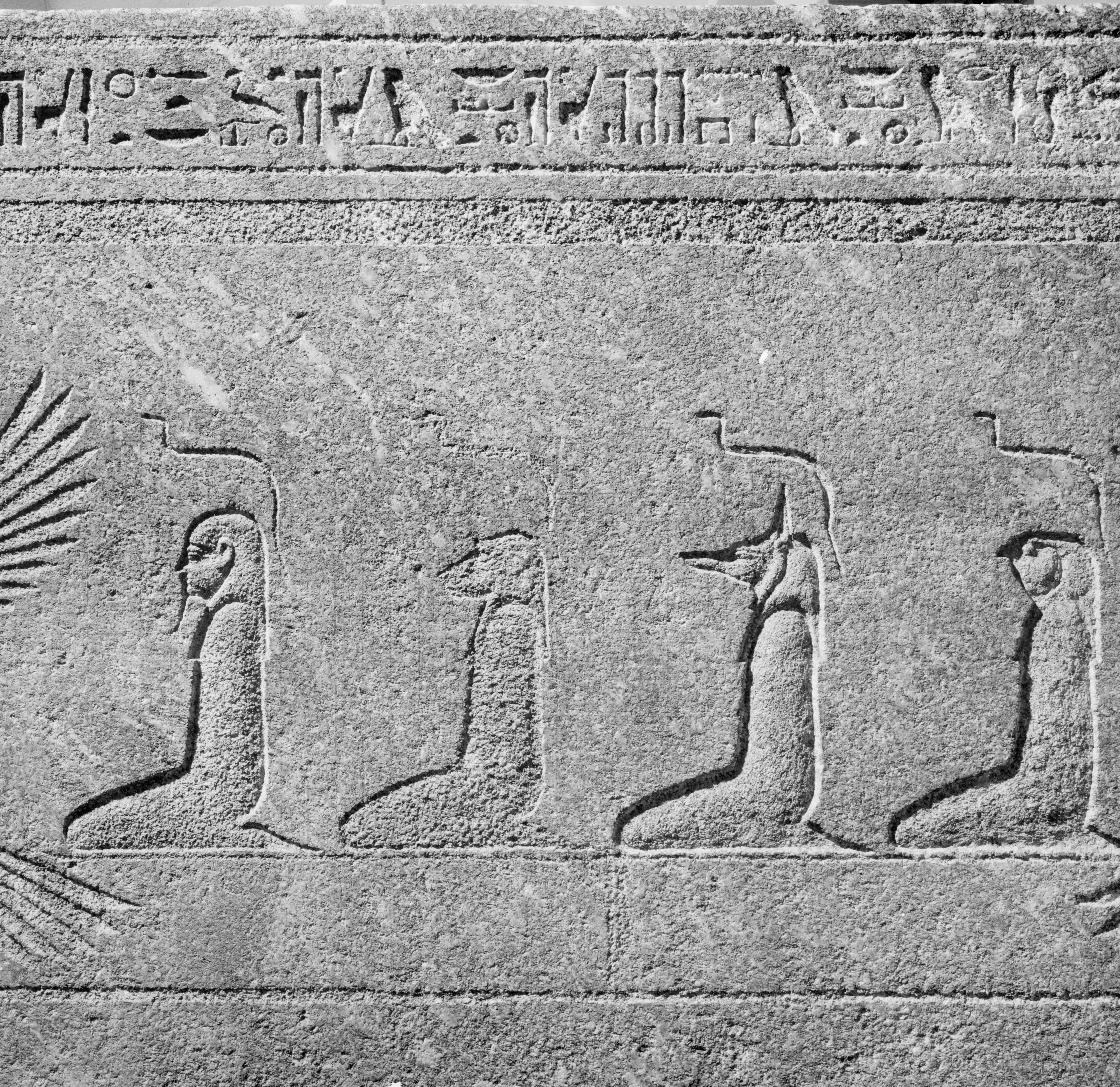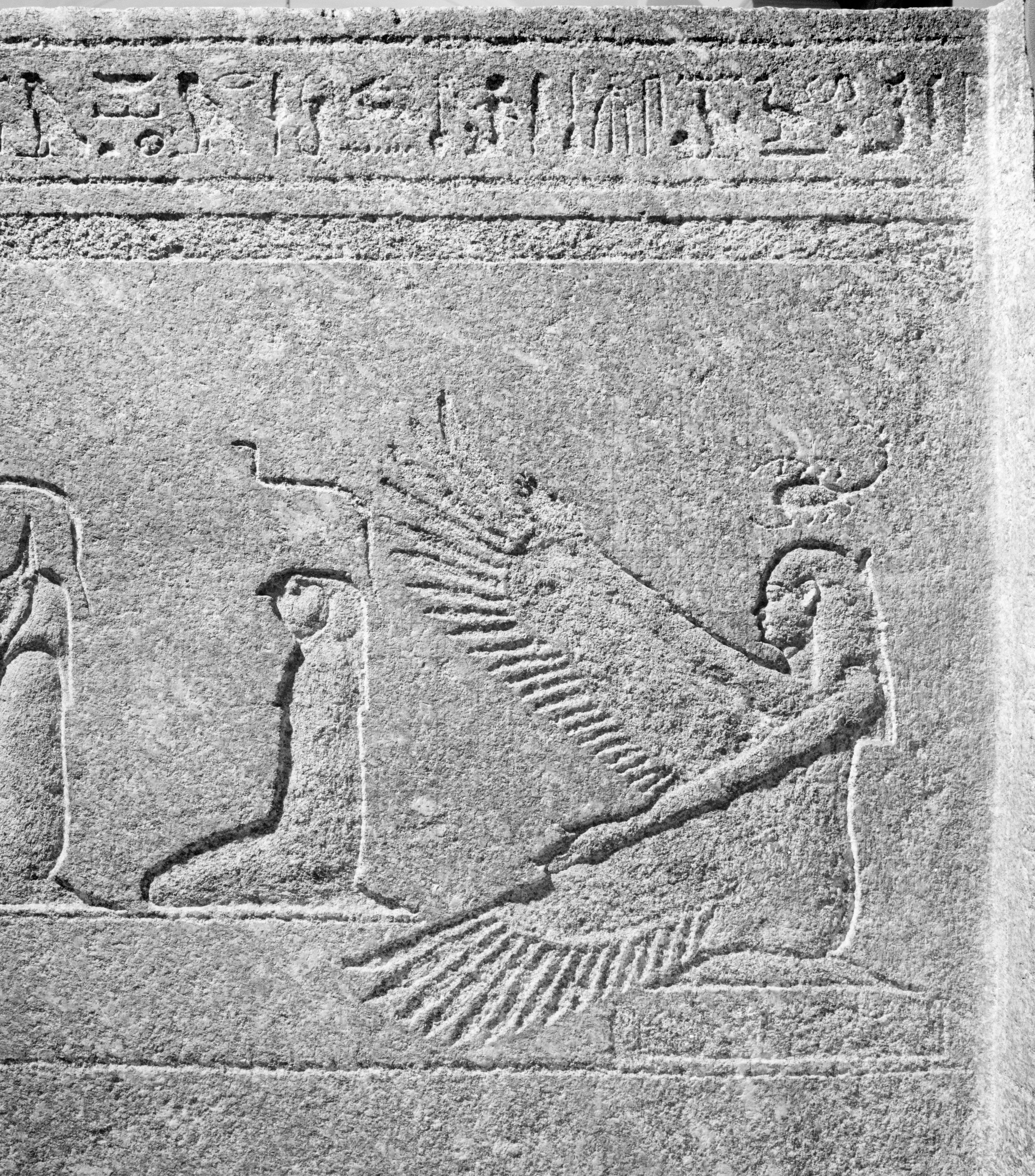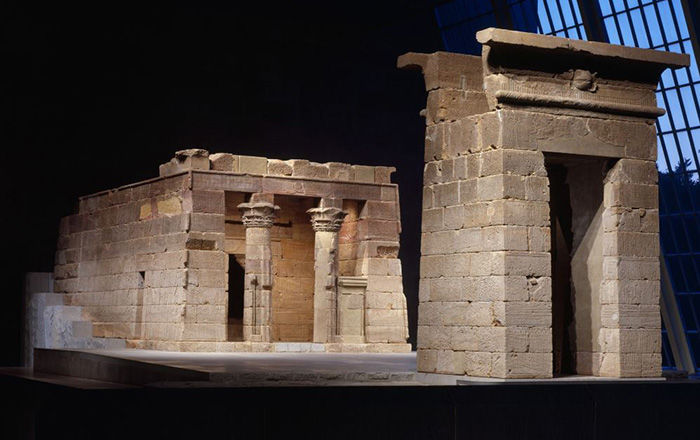The remains of the tomb of the high official Wennefer (II) lie in the vast Late Period cemetery at Saqqara, beside the causeway leading to the Serapeum (see Arnold 1997). This massive sarcophagus was removed from the burial chamber in 1910 by James Quibell for the Egyptian government. There is no record of a mummy, but a number of faience shabtis from the tomb now reside in museums in France.
The type of trapezoidal sarcophagus used by Wennefer is found first in the 26th Dynasty and continues into the early Ptolemaic Period (Type I, Manassa 2007). The decoration, carved expertly into the hard stone, includes Spells 1, 84, 92, and 154 of the
Book of the Dead, meant to guarantee the successful transformation of Wennefer into an effective spirit and provide offerings for the afterlife. Hovering over the texts, under the streaming rays of the sun disk and thus illustrating his ability to be reborn and “go forth by day,” is an image of Wennefer’s
ba, an aspect of his intangible being in the form of a human-headed bird.
On the underside of the lid, the sky goddess Nut stretches out her limbs to protect the mummy. Her presence also emphasizes the identification of the sarcophagus as a microcosm, in which Wennefer could dwell safely for eternity, being reborn with the sun each morning. As the mother of both the sun god and the god of the dead, Osiris, Nut enhances the association of the deceased with both gods, and guarantees Wennefer’s rebirth from her womb.
On both the interior and exterior of the box are texts and images illustrating the hazardous nightly journey of the sun god through the Netherworld. The vignettes include both solar and Osirian imagery, emphasizing the melding of the sun god and the god of the dead that ensured the successful daily rebirth of the sun at dawn, and, by association, the eternal regeneration of the deceased.
Wennefer II’s family hailed from Behbeit el-Hagar (ancient Hebyt), where he was a priest of Isis at the temple built during the reign of Nectanebo II (see
12.182.4c). His wife, Sentaes, was a sistrum player at the same temple. The powerful vizier Harsiese was likely his uncle.
As an overseer of the magicians of Selket, Wennefer likely participated in medical procedures and magical rites. His importance in the bureaucracy of the 30th Dynasty is emphasized by his position as priest of the statue cults of both Nectanebo (II), the falcon (see
34.2.1), and the king’s father, Tjahapimu (see
08.205.1). Inscriptions from his tomb also provide details of his eventful life, during which he was arrested (perhaps for participating in a coup d’état) and then released, traveled with a fleet to Syria, and, after the Persian conquest in 343 B.C., entered the service of the new rulers of Egypt.
Janice Kamrin 2022
References:
Arnold, Dieter 1997. “The Late Period Tombs of Hor-Khebit, Wennefer and Wereshnefer at Saqqâra.” In
Études Sur l’Ancien Empire et La Nécropole de Saqqâra Dédiées à Jean-Philippe Lauer, edited by Catherine Berger and Bernard Mathieu, 1:31–54. Montpellier: Université Paul Valéry-Montpellier III.
Manassa, Colleen Marie 2007.
The Late Egyptian Underworld: Sarcophagi and Related Texts from the Nectanebid Period. ÄGYPTEN UND ALTES TESTAMENT 72. Weisbaden: Harrassowitz Verlag.


